Pete chases shadows and Manon Carpenter in their search for this Norwegian myth.
Words & Photography Pete Scullion
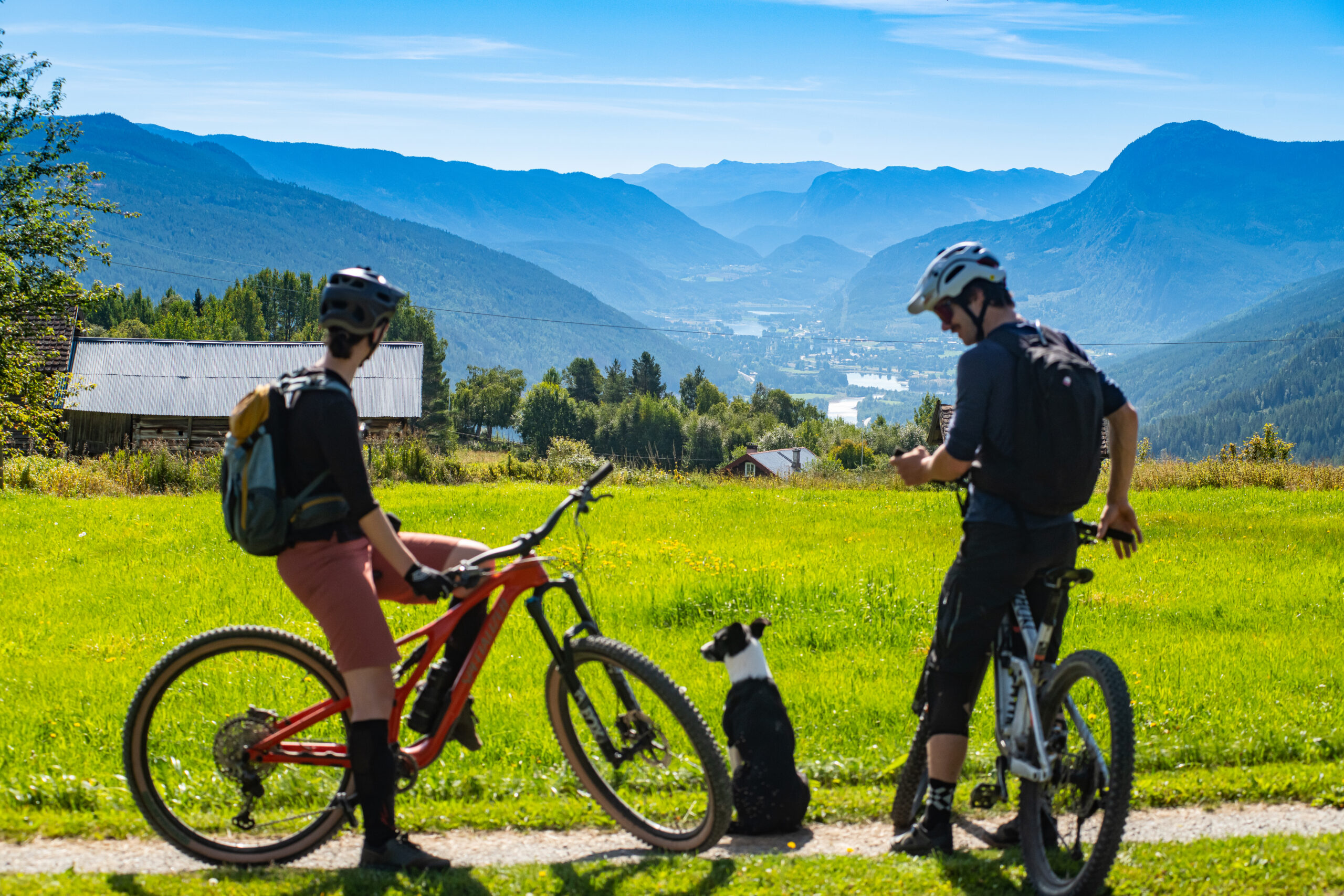
Mention Scandinavian myth and legend to anyone, and they’ll no doubt think of trolls and fairies, or maybe even some of the bleaker aspects of Hans Christian Andersen’s works that get overlooked by Disney and the like.
Huldufólk are part of this larger Norse lore – generally more closely linked to Iceland and the Faroes than southern Norway, but it’s where I find myself searching for ‘hidden people’ with the help of local legend Will Gibson of Any Excuse to Ride fame and one former downhill World Champion, Manon Carpenter.
Latest Singletrack Merch
Buying and wearing our sustainable merch is another great way to support Singletrack
The legend in question blends Old Germanic with Norse and comes from the early days of Norway’s unification under Harald Hårfagre. Prior to the unification around 872, the king of Hallingdal was one King Hadding. The king had two sons, who, in traditional style, fought for control of the valley and their father’s lands. One died in that fight and is buried under a mound near Gol, just up the valley from Any Excuse to Ride’s HQ. This site is still rumoured to be the place where Huldufólk can be seen. So, under a blazing late summer Norwegian sun, we set out on our first shuttle to gain some height and start our journey to where Will is convinced King Hadding had his royal seat, in what is now the hamlet of Garnas.
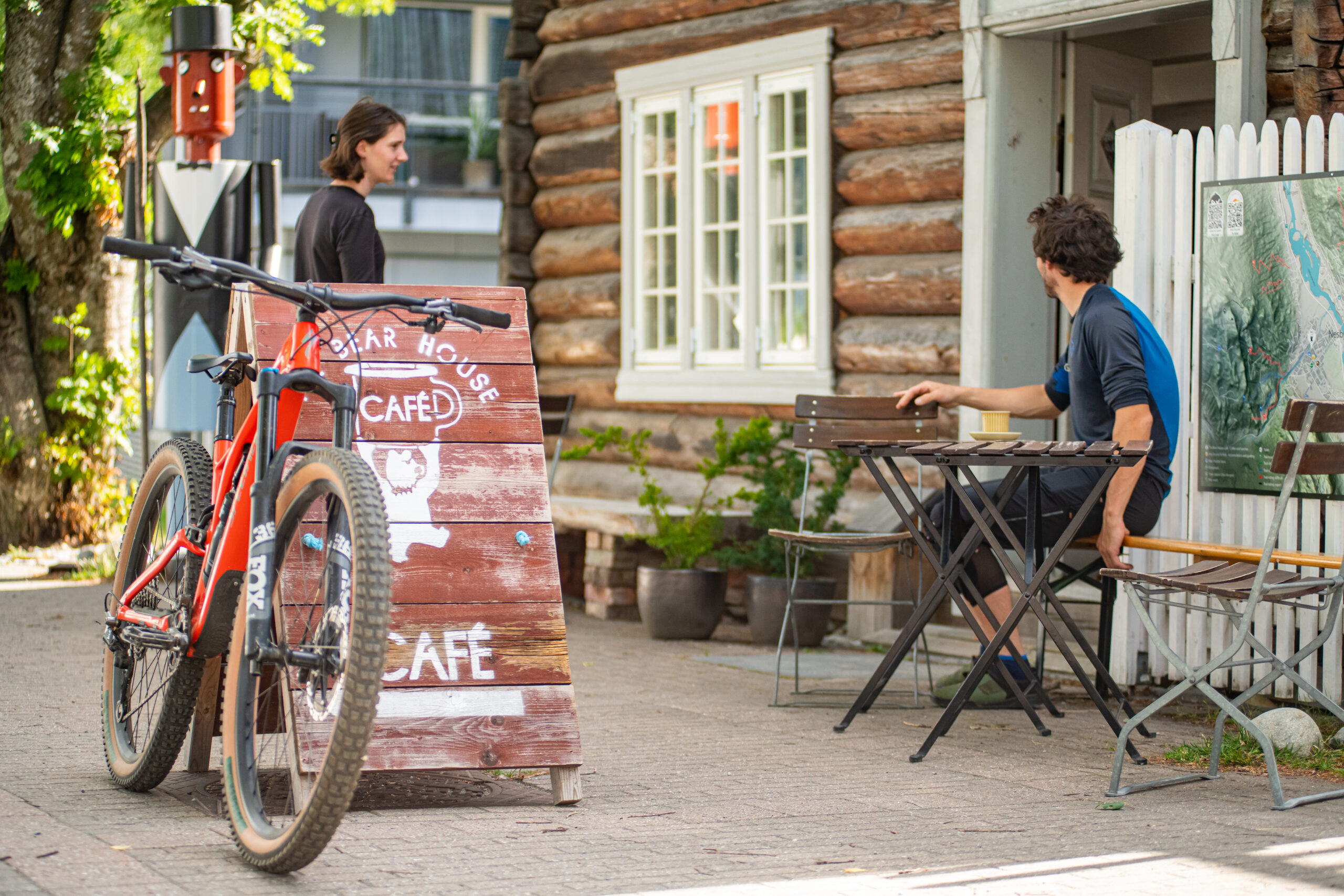

One elk of a sandwich
Well, I say we set out – we actually ride straight to The Bear House Café, also owned by Will, to get some wake-up juice and acquire some fuel for the rest of the day. It would be my first time trying elk in a sandwich, but that can wait till later.

With Bartek behind the wheel of the ever-ready luminous orange Any Excuse to Ride Defender, we soon gain height that would have been torture in the morning’s heat and taken far too long. We climb out of the valley where the road, the river, the railway and farmland are all hemmed in, passing numerous small farms until we’re almost above the tree line.
It’s not long before we meet a locked gate so we decant from the Defender and start winching our way up a fire road that looks so well surfaced it is likely better than most British roads. There’s a steady wind through the pine trees that offer shade from the strong sun climbing ever higher in the sky. With the valley flanks hovering around the thousand metre mark, it’s always a treat to have a treeline so high compared to the UK. The plantation forests here seem far more airy and less oppressive than their British counterparts, and give way to plenty of broadleaf trees higher up the hill. Even when we bust out onto the open hill we find plenty of birch and alder hugging the cliff face, doing their level best to ignore gravity before giving way to bog myrtle that grows far larger than the stunted shrubs we get on these shores.
Before we drop into the trail, we wheeze ourselves back into life as we pass through the obligatory collection of small ponds and lakes that occupy any high, flat ground in Norway, the home of the mosquito and a tempting spot for what would likely be a very smelly swim indeed.

It’s fairly obvious that we’ll drop a significant amount of height once atop the climb, with Gol huddled in a dogleg in the valley below. We waste no time in getting stuck into the descent. Half the hill is multi-line tractor track that hasn’t seen a vehicle in years. The many lines narrow into one without warning and losing the trail risks a tumble down the cliff. We essentially make a long, steady traverse of a very steep-sided valley with most of the exposure on our right, coming and going as we rattle our way off the hill. It takes a while for me to ignore the sheer drop and focus on going fast, but a minor wobble here would see you in a whole load of trouble very quickly indeed. Either you’d be careering through the tall pines, hoping not to be brought to a halt by one, or navigating the massive granite slabs that litter the forest.
Norwegian dust
Will opens his guiding trips on this trail and Manon is, well… Manon. I’m soon left to content myself with keeping them within earshot. Fast, straightforward trails have never been my forte and I’m at least saved from picking the dust from my eyes by not following too close. After my previous outing in Norway, the constant presence of dust was something I’d not factored in and this would be the first of many days I’d rue leaving my riding glasses in Scotland.
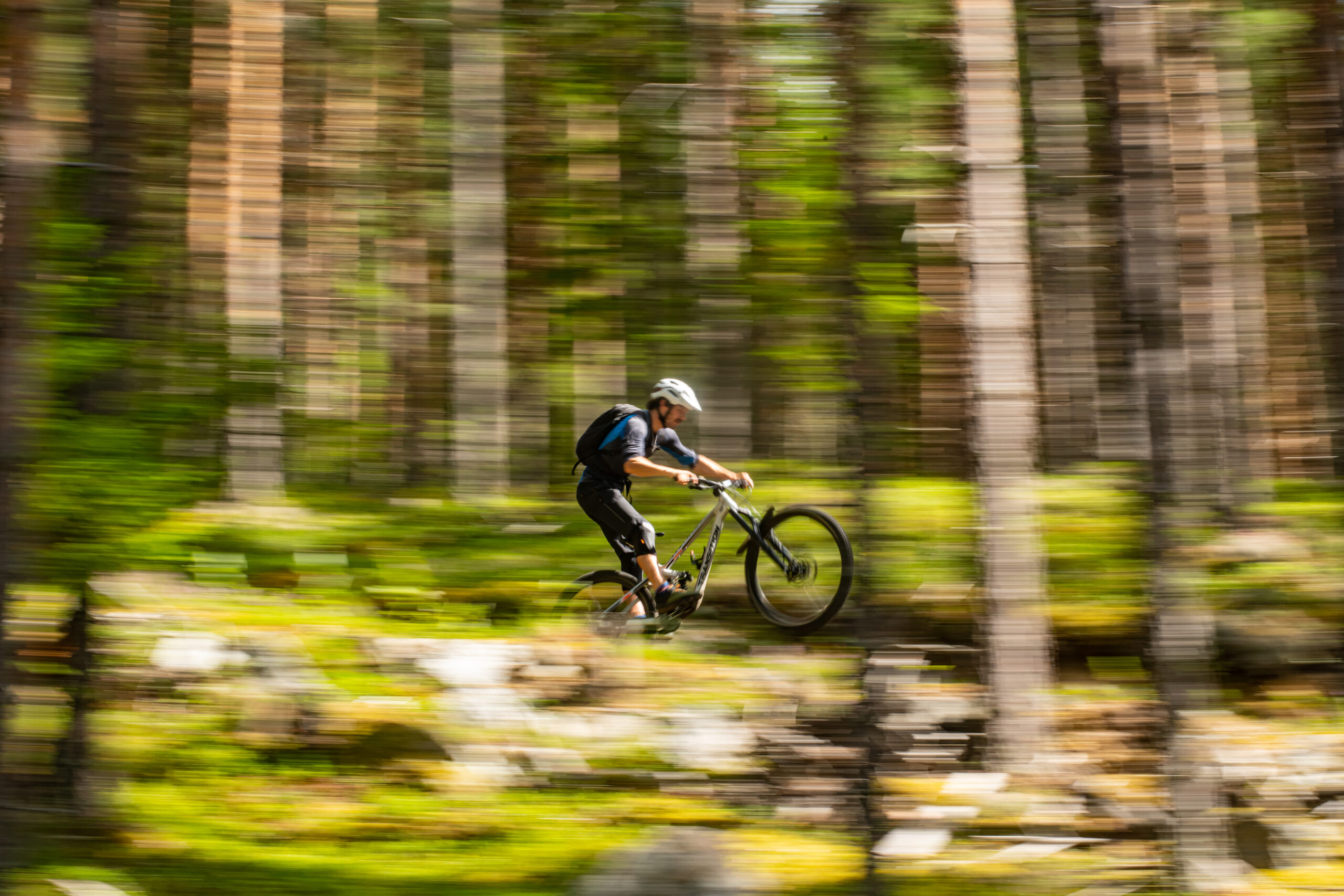

Norway spruce dominate the upper reaches of the hill before the track narrows gradually, giving way to a sea of green beneath the tallest, straightest Scots pines I have ever come across. We descend for some time back towards Gol – it’s rare to go this fast for so long and still be nowhere near the base of the valley. Out of the trees and back into the farms, we wind our way down through the smallholdings, with a view well up the valley beyond. We opt to keep some height and take in another absolute belter of a trail rather than have to climb back up the full height of the hill.
Trails here seem to come in three forms. Hectic and rocky, with more than a few razor-sharp granite rocks hoping to empty the wind from your wheels, usually hidden just beyond a blind crest. A true test of whether or not you can ride what’s in front of your front wheel fast, and of excellent low speed compression set-up. The second is loose, sandy dirt, mostly where granite is king. Think the bits between the rocks at Nevis Range, but with far less water. When freshly dug, this is about as close to snow sports as you’ll get on a bike. Trust the bike to do the work while you just do your best to stay on top of the thing. The final is the bed of pine needles. A carpet that muffles any sound of tyres and makes you feel like a winner if you have your suspension dialled. We ride all three today, with little warning that change is afoot and often vanishing as soon as it has appeared.
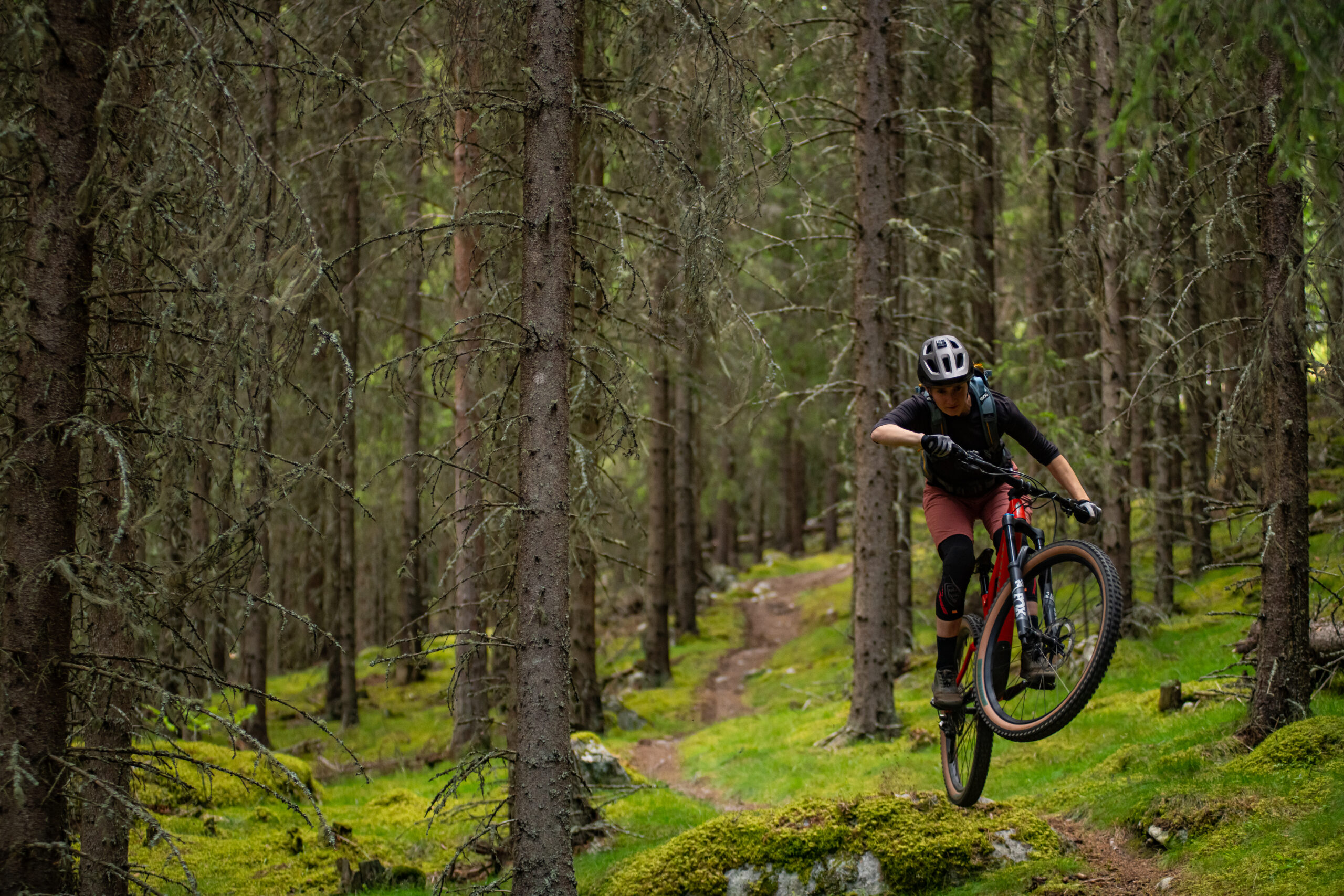
By now, I can hear the elk sandwich in my pack talking to me. I’m disabused of the notion of getting stuck into it by Bartek appearing for yet another shuttle, this time up to the hill above Garnas and the treasures it holds. At this stage in the proceedings, we’re joined by the fastest dog on land (she has yet to be tested on water), one Nora doggo, a dog that has little interest in chin scratches and belly pats, but will show you just how fast a trail can be tackled, and might, if you’re lucky, try to steal the socks off your feet.
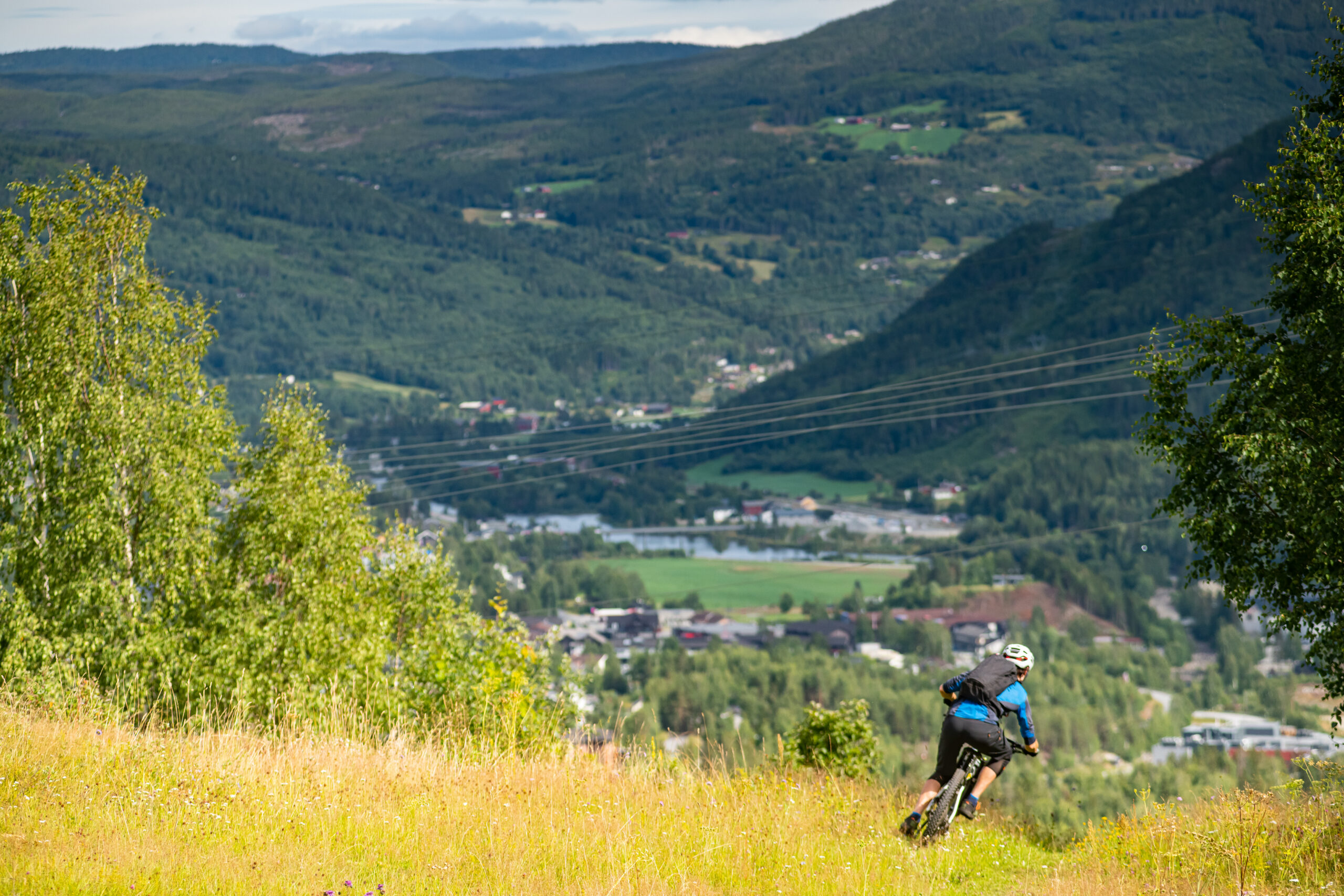
While we might not be as high as we were when dropping into the first trail of the day this is clearly the perfect location to look down on a kingdom. The ground here is far broader. with sheer drops down into the valley that would make an approach visible from miles away. Higher on the hill, the ground is wet and boggy, making an attack from above quite unlikely too. Plus anyone would have had to travel far over the mountain plateau to get here and would likely be exhausted by the time they arrived.
Would you Adam and Eve it?
It’s here that it’s said King Hadding had his royal seat and kept his royal guard. The farms that now sit on this fertile bowl above Hallingdal are reportedly built on several burial mounds, the past here being lost to large red barns and the older, Norwegian-style storage ‘houses’ that look like the house of Baba Yaga from the Hellboy remake. These houses are storage for grain and food – raised off the ground on rocks or logs, they can be transported to other locations should the need arise. Legend has it that a young Norwegian woman survived the Black Death by staying within the confines of one of these edifices.
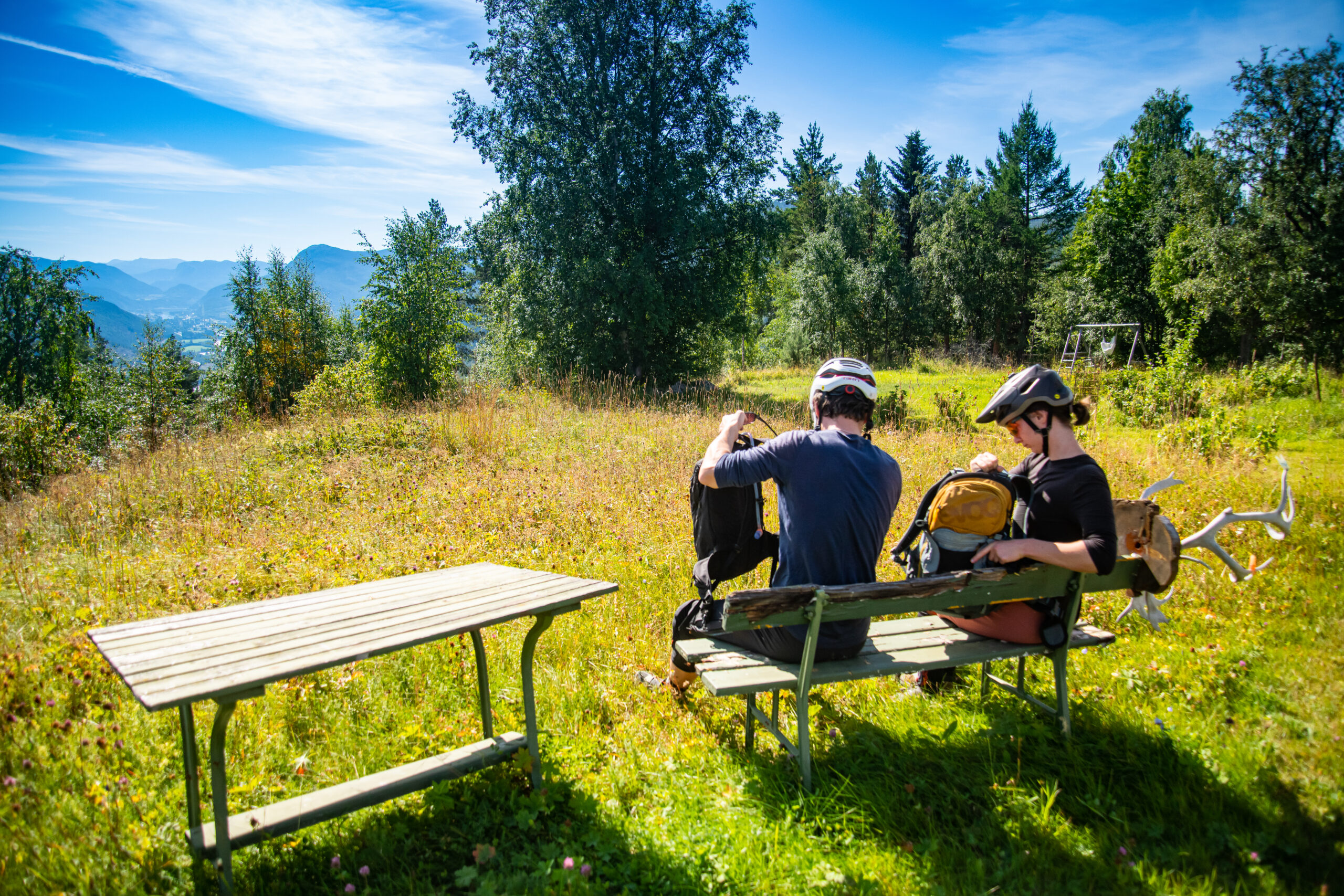
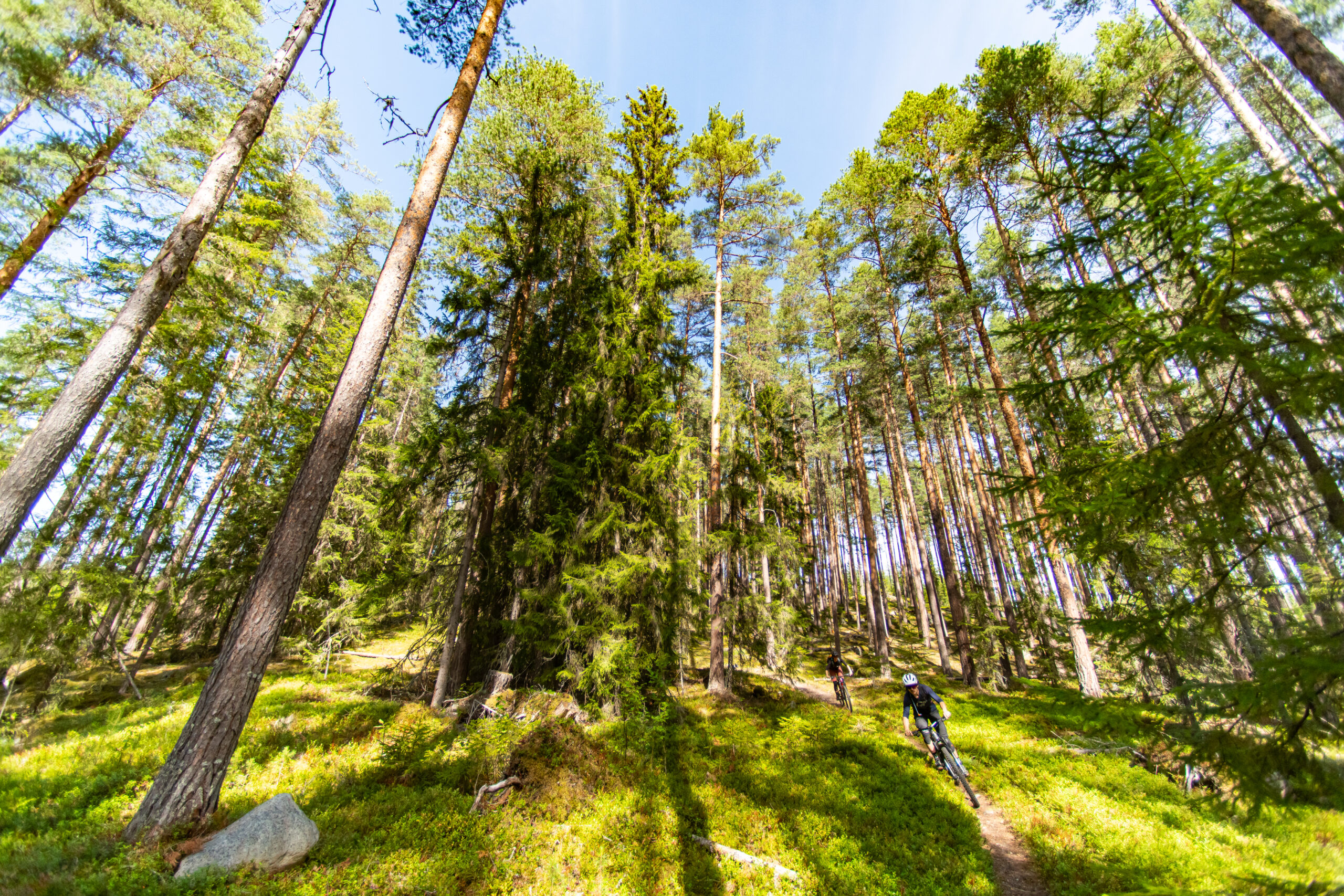
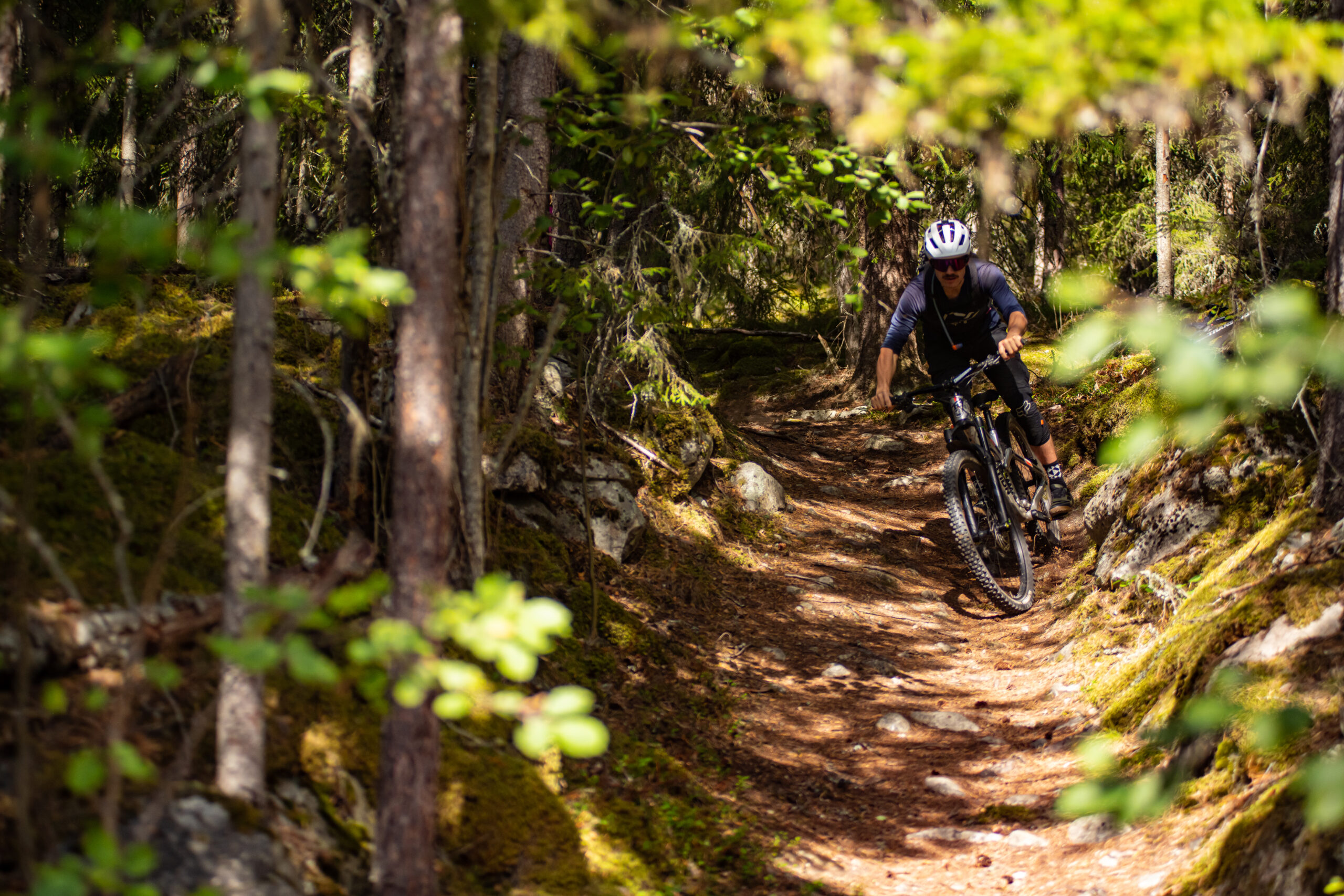
It is here too that legend says the huldufólk have been sighted. There is little evidence of burial mounds elsewhere in the Hallingdal valley so this is our best bet. Whether or not they are here will always be open to debate, but there’s a hint in the name itself. Huldufólk means ‘hidden people’ and, in the Scandinavian tradition, is a blend of Norse lore and Christian folktales. One such story infers that the hidden people stems from the story of Adam and Eve hiding their unwashed children from God, and lying about their existence. “What man hides from God, God will hide from man.” Other tales tell of fallen angels, banished to a world between ours and the dead.
Much of the oral tradition of stories involving trolls and fairies, or even perhaps the kelpies from my previous Skye adventure, serve as warnings to the young or naïve. They’re tales that keep people from wandering off into the wilds lest they be seduced by some malevolent spirit.

Another explanation for the huldufólk is that they are, in effect, mirror images of those who occupy the real world, although put on a pedestal of beauty and success, they are powerful and carefree… A representation of how those struggling to put food on the table might aspire to be.
Whatever one might choose to believe, the legend has it that huldufólk can choose to be visible at will, but there seems to be no hint as to what might make them do this, or whether this can be influenced by those in the mortal realm. In any case, in contrast to the other mythical beings that tend to be malevolent in some way they are ultranatural rather than supernatural, in that they are the aspiration in many ways of what common folk wish to be. There are also tales that because huldufólk form a link between the natural world and our own, as technology has improved they have fled. Faroese lore is that they left the archipelago as soon as electricity was introduced.
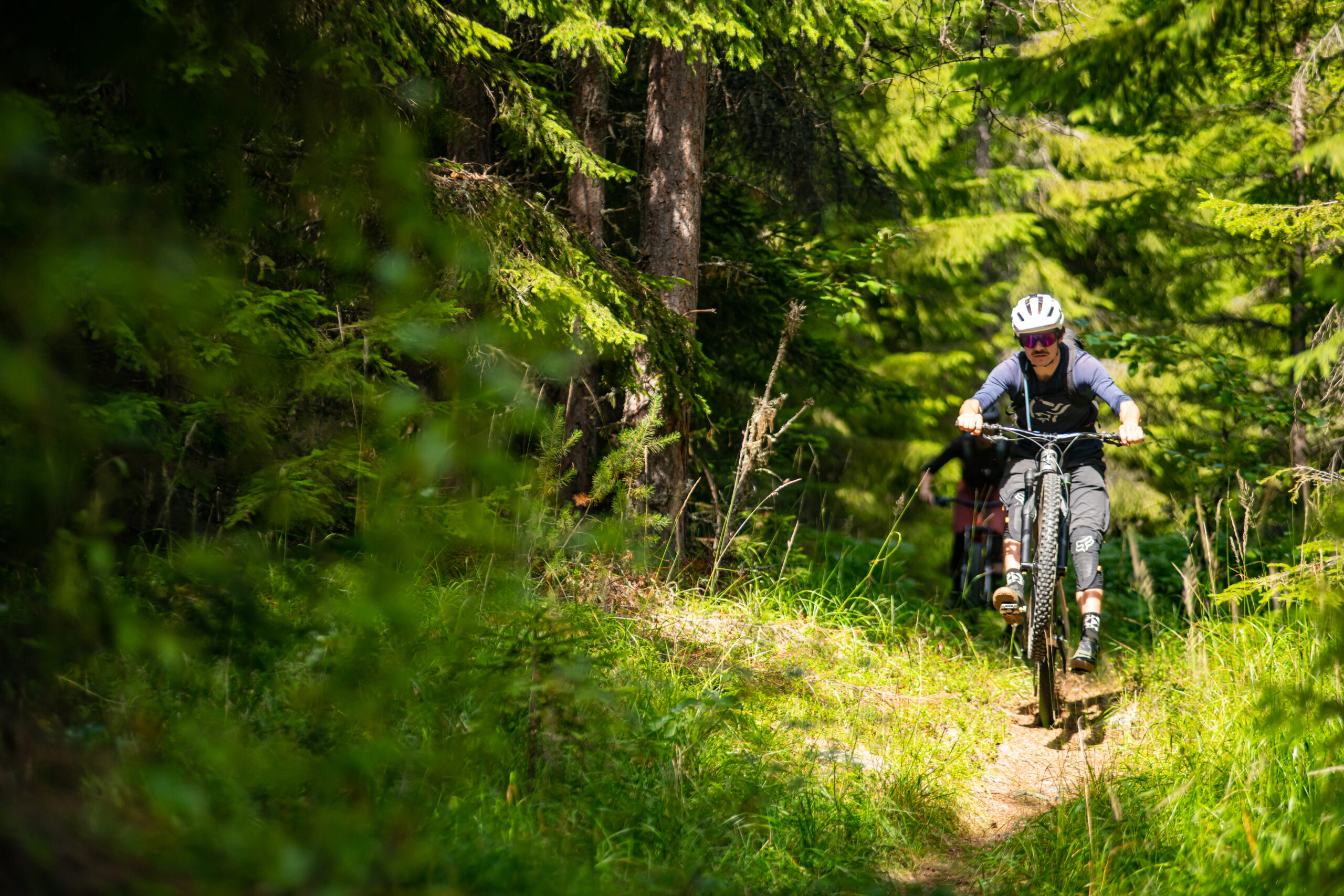
Whatever the case with the huldufólk, we don’t see either real or hidden people anywhere in Garnas. As we sit down in an abandoned farmstead and I finally tuck into the elk that has sat next to my sweaty back for a few hours, we wonder where the real people had gone. It’s midsummer and we’re surrounded by farms, but nothing seems to be happening. It’s a cracking spot to have lunch, high above the valley looking south towards Nesbyen, our base for the week, and beyond. We have the old postie’s path that runs the length of the ridgeline facing south to ride back to the base of the valley. This track was served until the 1970s by a dutiful postie who would climb just shy of 400m vertical metres on this path to deliver mail to Garnas and its neighbours. You can only imagine the calf muscles on them after Christmas…
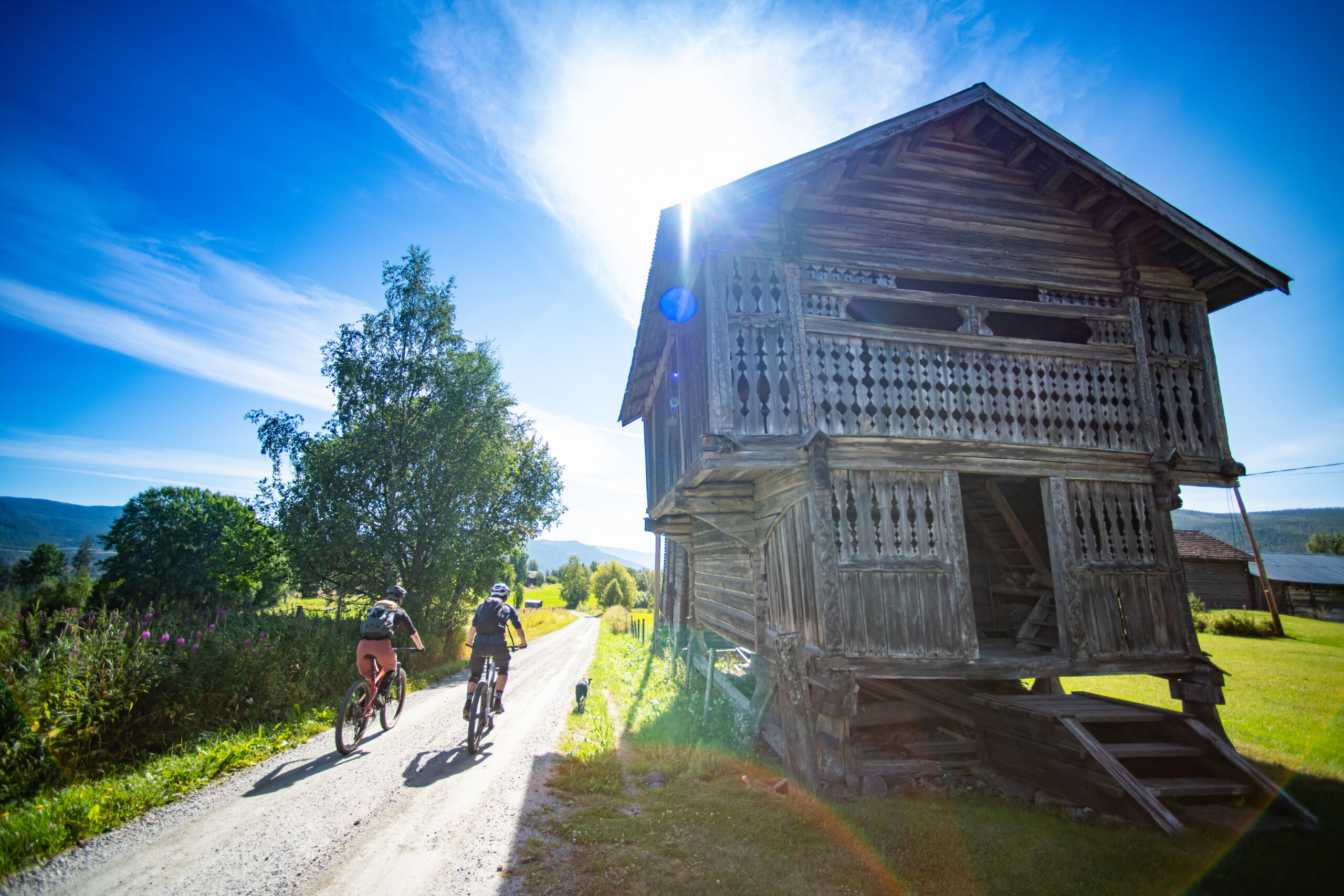
Tired children
The postie path is much like the opening sortie of the day, fairly straight and fast, but this one is far narrower once we leave the sheep pens behind and dive back into the spruce below. The ground is thick with bilberry bushes which make looking ahead a tall order as the trail sweeps its way through this amazing forest towards the valley floor, the hot air redolent with the scent of trees and shrubs.
Once again, I’m left in a wake of dust that hangs on the still afternoon air, blinking hard to get the grit out of my eyes as I do my level best to keep the pinners in earshot as they clatter off downhill ahead of me, with Nora showing them the way, naturally.
Almost as soon as we start, we’re spat out into a layby alongside the main road heading back to Nesbyen for a smooth cruise back to town. We’d seen no huldufólk, but that isn’t entirely a surprise. Much of this series has gone on the hunt for what is likely nonsense. Ideas conjured in the minds of those with a strong connection to the natural world, but a poor understanding of it. These mediums help explain the natural forces around them and then create vehicles to warn rowdy children away from dangers beyond their villages. We return to civilisation, a little less rowdy, happily tired from our playtime out on the trails.




